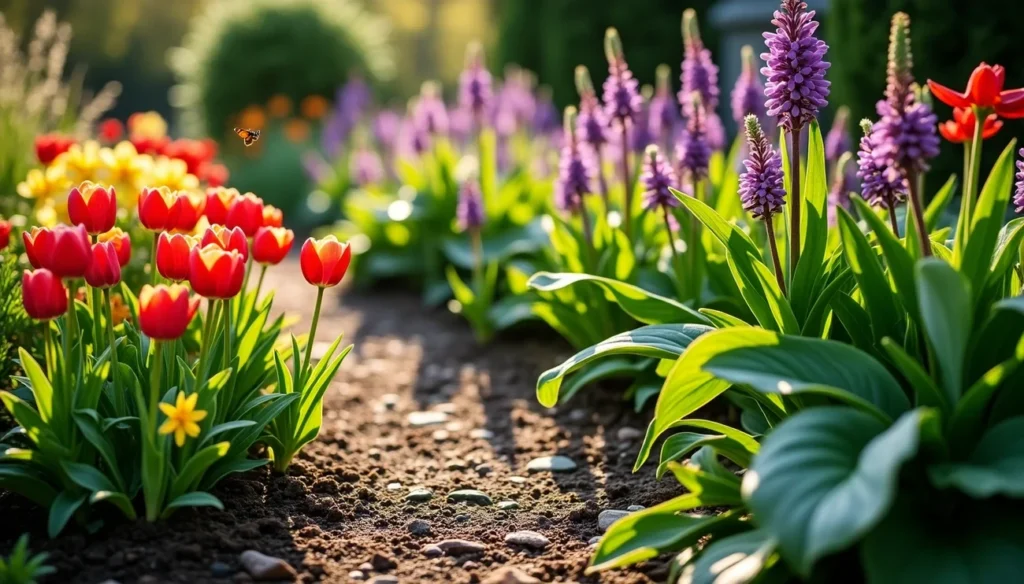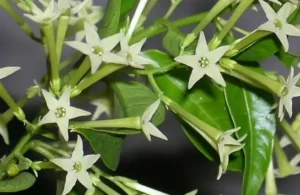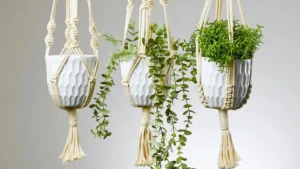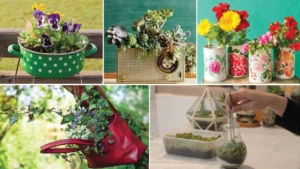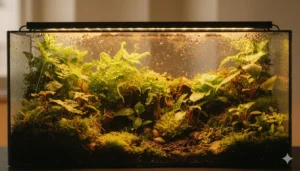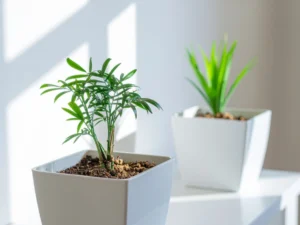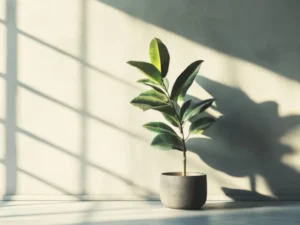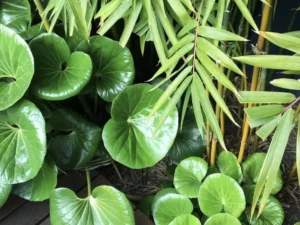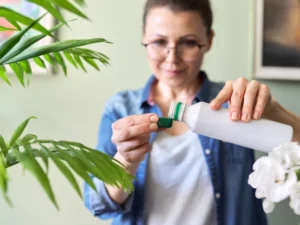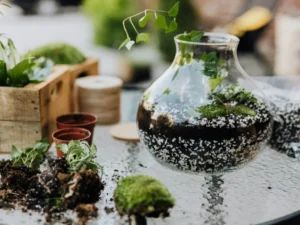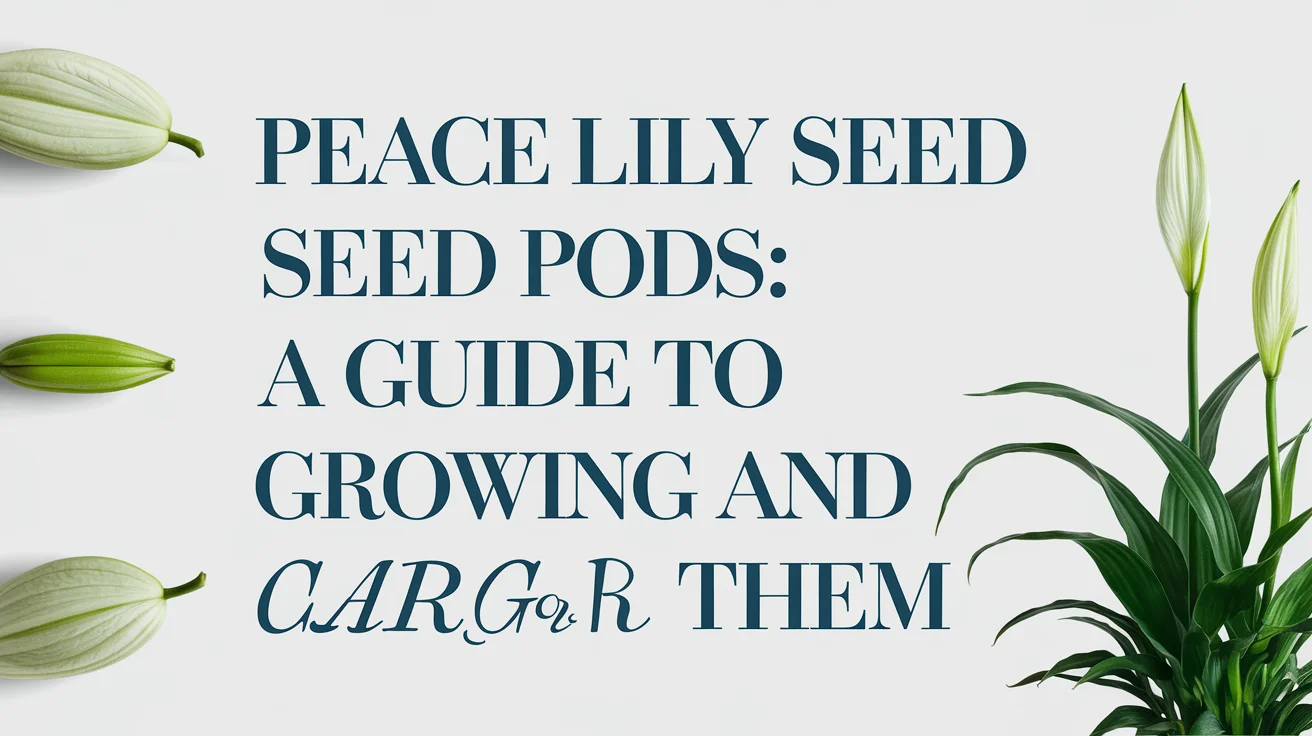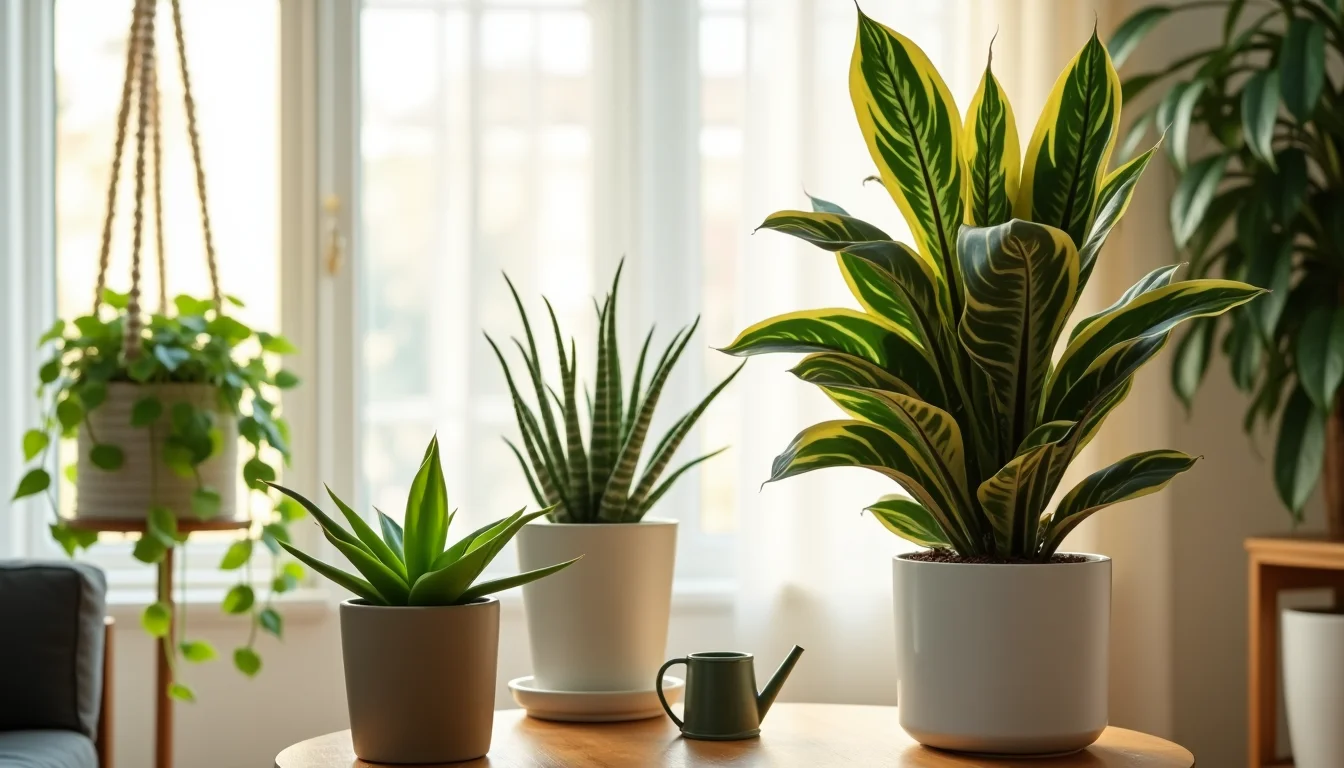With their unique life cycles, seasonal plants offer a breathtaking glimpse into nature’s calendar. From the towering Angelface Super Blue, which reaches 40 inches tall, to the impressive Big Dipper Elephant Ear, which grows up to 6 feet, these botanical wonders never fail to inspire awe.
Our time in the garden has taught us that each seasonal plant follows its growing pattern. Most gardeners want their landscapes to look beautiful every season, from spring bulbs to summer annuals. These plants help our ecosystem by drawing pollinators like bees and butterflies.
Perennials such as Echinacea pallida, which grows up to 1.25m tall, show this perfectly. This piece walks you through the perfect timing for your seasonal garden. You’ll learn about heat-loving summer varieties and hardy plants like the Pink China Elephant Ear that survives zone 6a winters.
Understanding Seasonal Plant Categories
You can transform your garden from lacklustre to stunning with the right timing. Understanding how different plants behave each season is the key to a thriving garden all year round.
Annuals vs. Perennials: What’s the Difference?
Annuals complete their entire life cycle in a single growing season. After flowering and setting seed, these plants die when freezing weather arrives. Perennials come back year after year, and some can live for decades.
Annuals are special because they flower longer and immediately add colour to your garden. Our gardens look best when we mix perennials, which offer lasting value, and annuals, which provide nonstop blooms.
Climate plays a significant role in how plants behave. Plants that grow as perennials in southern regions might act like annuals in colder northern areas. For example, lantana forms a perennial shrub in the Deep South but grows annually in northern states.
Biennials and Bulbs: Timing Their Growth
Biennials have an interesting two-year life cycle. These plants develop leaves, stems, and roots in their first year and then rest during winter. The second year brings flowers, seeds, and the plant’s natural end. Common biennials include:
- Parsley and fennel
- Sweet William
- Foxglove
- Hollyhock
Spring-flowering bulbs like tulips and daffodils need the proper planting time. They should be planted in the fall, typically 6-8 weeks before the ground freezes. Most spring bulbs need 12-15 weeks of cold weather to bloom fully. We plant a mix of early, mid, and late-season bloomers to enjoy flowers longer.
Grasses, Shrubs, and Trees: Long-Term Planning
Grasses have two main types, and when to plant them is determined. Warm-season grasses love hot summers but rest when temperatures drop below 50-55°F. Cool-season grasses thrive in fall and early spring and stay green all year unless temperatures remain below freezing.
Shrubs and trees need planning beyond seasonal care. These woody perennials take time to establish but reward gardeners with beautiful structural elements as they mature.
Spring and Summer Planting Guide
Spring’s arrival signals the perfect time to maximise our garden’s potential. Experience has taught me that planting at the right moment can transform an average garden into a thriving oasis.
Top Spring Bloomers to Start Early
The garden comes alive when the soil becomes workable in early spring. You can direct-sow peas and spinach as early as March. Radishes, beets, and carrots follow naturally a couple of weeks later. Cool-weather flowers like pansies, nemesia, and osteospermum daisies add beautiful spring colour and handle early planting well.
These crops need indoor starts from late February to early March before transplanting:
- Broccoli, cabbage, and kale (choose heat-tolerant varieties)
- Onions, leeks, and lettuce
- Cauliflower and fennel
Spring crops love cooler weather but struggle in summer heat. Early planting gives you the longest possible harvest window.
Heat-Loving Plants for Summer Gardens
Summer gardens shine with heat-loving plants. Mid-May typically marks the end of frost danger in many regions, and warm-season crops take centre stage. Tomatoes, peppers, eggplant, cucumbers, and melons need eight hours of sunlight minimum, though ten hours works best.
Basil, lavender, rosemary, sage, and thyme thrive in summer’s warmth. Black-eyed peas, okra, and Armenian cucumbers stand out with exceptional heat tolerance.
Watering and Sunlight Tips for Warmer Months
Most vegetables require an inch of water weekly. Consistent moisture prevents issues like blossom end rot and cracked tomatoes. Morning watering works best – plants get their moisture before heat builds up and leaves dry quickly enough to prevent disease.
Plants have specific sunlight needs:
- Full sun: 6+ hours daily (most flowering and fruiting plants need this)
- Part sun: 3-6 hours daily
- Shade: Less than 3 hours daily
A 2-3 inch mulch layer protects plants in intense heat by keeping roots cool and holding moisture. Container plants dry out faster than ground plantings, so check them daily during hot spells.
Fall and Winter Planting Strategies
Temperatures drop, and garden vitality needs special attention through the colder months. Your fall and winter garden requires a different approach than summer growing, but the rewards are worth braving the cold weather.
Cold-Hardy Plants That Thrive in Fall
Several plants thrive in autumn despite frost and freezing temperatures. Coneflower (Echinacea) might lose its bright purple colour in chilly weather, but it bounces back strong in spring with proper care. The lily of the valley shows similar resilience and stays deer-resistant because of its poisonous properties. You can add winter interest with these plants:
- Winterberries – striking red berries that add winter colour and survive Zone 2 conditions
- Blue spruce – looks stunning under snow and thrives in Zones 2-7
- Wintergreen boxwood – keeps its beautiful foliage even under snow
Pansies can handle low temperatures amazingly well. You can plant them in late winter to get early spring blooms. Primrose adds beautiful colour with proper mulching, thanks to its shallow roots.
Preparing Bulbs and Perennials for Winter
Spring-blooming bulbs need fall planting. The best time to plant bulbs is when evening temperatures stay between 40-50°F, usually 6 to 8 weeks before the ground freezes. During this period, roots get established without triggering top growth. Your bulbs should be planted three to four times their length deep, and sandy soil needs them two inches deeper.
The ideal time to divide overcrowded perennials is after their flowers fade. Plants store enough energy in the fall to better handle transplant stress. Make sure you finish transplanting at least six weeks before frost hits.
Mulching and Soil Protection Techniques
Mulch helps keep soil temperature steady and shields plants from harsh cold. The ground should freeze first before you add winter mulch. This prevents disease problems from warm, damp conditions. A 2-4 inch mulch layer works best, but keep it away from stems so rodents stay away.
Straw makes a great winter mulch for seasonal plants because it insulates well and lets air move through. Perennials without winter appeal need pruning to 2-3 inches above ground, and their crowns need 6-8 inches of mulch protection.
Creating a Year-Round Garden Plan
My experience shows that successful year-round gardening requires thoughtful planning instead of random planting. A garden that looks amazing every season comes from knowing how plants change and work together throughout nature’s calendar.
Mapping Out Seasonal Transitions
Thoughtful planning makes a massive difference to seasonal garden changes. My focus goes beyond current blooms to the next wave of flowers that will take over as others fade. Spring consists of three mini-seasons based on your climate’s frost-free date. This knowledge helps me plan strategic plantings. Early bloomers go in front of later varieties. Taller plants stand behind shorter ones to make everything visible.
Using Containers for Flexibility
Containers give you excellent options for year-round displays. You can move potted arrangements to catch seasonal light or bring them inside during harsh weather. Most perennials and shrubs grow well in containers for years, which saves replanting time.
To survive winter, seasonal plants should be hardy to two zones colder than your region. The best protection comes from frostproof fibreglass, lead, iron, heavy plastic, or stone containers. My experience shows that glazed pottery also works great.
Companion Planting for Continuous Colour
Bright plant combinations ensure nonstop blooming. The “bulb lasagna” method layers bulbs at different depths, creating waves of flowers from the same spot. Spring and fall-planted bulbs work together for endless flowers. Summer bloomers pop up as spring varieties fade. Evergreens add winter structure, especially in perennial beds where plants die back after frost.
All Seasonal Plants That Work in Most Zones
These plants shine in multiple seasons, whatever your location:
- Dogwoods show bright winter stems and spring flowers
- Heuchera (coral bells) keeps colourful foliage from spring until frost
- Golden creeping Jenny cascades with golden foliage
- Winterberry hollies display striking red berries all winter
- Ornamental grasses add texture, movement, and winter structure
These planning strategies help me create a garden that tells a visual story year-round. Each season brings character and beauty to the landscape by thoughtfully incorporating seasonal plants.
Conclusion
Our gardening trip has taught us that becoming skilled at seasonal planting can turn a basic yard into a living canvas that shifts with the seasons. Plant categories like quick-blooming annuals and long-lived perennials are the foundations to time our garden work just right. This knowledge helps us know what each plant needs before the perfect conditions arrive.
Each season brings its chances to garden. Spring is perfect for early bloomers and cool-weather veggies, while summer’s intense sun helps heat-loving flowers and herbs thrive. Fall and winter need different tactics – cold-hardy plants and protection methods that help them survive until spring comes back.
Good planning is the lifeblood of year-round gardening. Mapping seasonal changes, using movable container plants, and clever companion planting will give our gardens visual appeal, no matter the date. The absolute joy comes from watching the garden’s rose-spring bulbs making way for summer flowers, then fall colours and winter patterns taking over.
Seasonal gardening success with seasonal plants takes work. It grows through watching closely, acting at the right time, and staying patient. Savvy gardeners work with nature’s rhythms instead of fighting them. This natural partnership creates beautiful gardens and a deeper connection to life’s endless growth, rest, and renewal cycles.

